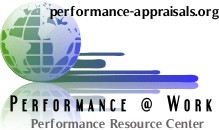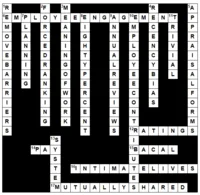Ranking Employees Explained
The Basics of Ranking Employees
Employee ranking systems involves ordering employees with respect to each other, in an attempt to both improve organizational performance, and to assess the RELATIVE value of employees. It's a comparative method, pitting employees against each other. Theoretically employees can be put in rank order using any metric (like cumulative ratings on forms), or based simply on a manager's "gut feeling".
Curse of Employee Ranking Systems
Here's a quick video where I explain more fully, the dangers of ranking employees
Ranking employees makes some intuitive sense, until you think a bit more about it. Doesn't it make sense to keep your best employees, and perhaps lose the worst ten or twenty percent? Wouldn't that result in a more productive workforce? The use of ranking to determine who stays and who goes is called "rank and yank" which involves firing employees who rank at the bottom of the rankings. That method was championed by former GE CEO Jack Welch.
By the way, you will often see the term "bell curve" mentioned with ranking systems, but in fact that's used very rarely. Fitting data (i.e. cumulative ratings) to a bell curve actually involves statistically altering the "scores" so, the majority of employees are "average", with less employees falling in the "tails" (really good, really bad). Most companies don't actually do that.
The Problems With Employee Ranking
To some ranking employees makes intuitive sense, but it's one of the worst things a company can do. We've covered many of the issues around ranking and yanking elsewhere, but here are the bullet points:
- Ranking employees along some numerical scale is statistically flawed. It's not possible to use rating scales and summing them to come up with some "overall value" of employees.
- Ranking systems pit employee against employee, creating an environment where employees can receive rewards by working to have their colleagues FAIL.
- Ranking systems don't reflect today's workplace where work is inter-dependent, and teams are the norm.
- Since most ranking systems use faulty math, and involve adding up individual item ratings, something that is not mathematically valid), the rankings will be based on an inaccurate and misleading set of metrics
Here's more commentary on the perils of employee ranking..
By Michelle Adams - Formal performance review systems, especially those that include ranking, are seductive. They almost always produce short term, highly visible changes in behavior. The organizationís activity level increases, people put in more hours, they send more e-mails, etc. It is easy to look busy. But this activity level itself often masks other problems and in many cases makes things worse, particularly in the longer term. All systems that depend heavily on power are like this. The more power you use, the more you need to enforce your orders. The more vigilant you must be to catch cheaters. That requires more supervision, more management, etc. You add cost to your business. It is a spiral that consumes energy and time. Little of that time and energy will be directed toward meeting the organizationís goals, much less finding creative ways to improve performance in the future. Most of the creativity will be directed at pleasing the boss, looking busy, undermining teammates credibility, etc. Viewed 626 Times )
By Robert Bacal - Rank and yank is based on a number of false assumptions. We examine the first which has to do with the idea that new hires will be better than the people that got yanked. Viewed 1426 Times )
By Robert Bacal - Rank and yank can seem to work, but the Jack Welch syndrome accounts for why some companies that claim success based on rank and yank have made a number of logical errors and drawn false conclusions. Viewed 1268 Times )
By Robert Bacal - Short explanation of what employee ranking involves. Viewed 1721 Times )
By Robert Bacal - Quick explanation of what is called rank and yank as a method of evaluating, and firing the worst performing employees, and popularized by Jack Welch Viewed 1446 Times )
By Robert Bacal - It's an important question. We tackle whether the rank and yank techniques actually work. You may be surprised at the answer. Viewed 2159 Times )
By na - A must read for anyone interested in how the ranking of employees, and rank and yank affects companies over the longer haul. These comments were written by an Amazon Top 10 reviewer in extolling Dick Grote's new book, Forced Ranking: Making Performance Management Work. What's striking about the reviewer's comments is that he or she apparently sees no connection between forced ranking.................. and Enron's implosion! Was any of the chicanery that occurred at Enron directly attributable to a work culture that endorsed pugilistic contests and organizational Darwinism at all costs? Viewed 1221 Times )
By Loren Gary - Performance appraisals used to be a way to reward employees. Now so-called forced rankings are being used to lay them off. But will you be sued if you use them? Viewed 2579 Times )
By Patty Davis - When an effective performance management system is combined with a compensation management process, the results can be the same as those sought in a forced distribution system, but without the negative effects. Instead of looking for a crutch, organisations need to set clear expectations and hold managers accountable for achieving them in addition to tracking performance and providing coaching and honest feedback. By doing so, the organisation's human resources management processes will have integrity. After all, wasn't that the objective all the time? Viewed 2132 Times )
By Robert Bacal - One fallacy upon which rank and yank procedures are based has to do with the absolute differences between poor employees and less poor employees. Viewed 1522 Times )
|
Library Home Page |
Pages Updated On:
6-Sep-2016
-
15:26:57
We can help you with the various parts of a performance management system with our miniguides on each component.
Instantly downloadable and built to save you time.
There's even help for employees on how to navigate the process.


